Best Podcast Equipment Recommendations
Welcome to the MHM Podcast Network’s best podcast equipment recommendations. Below you will find equipment we use daily in our recordings, and think you can’t go wrong using as well. These aren’t the only choices out there, and we welcome your own input and additions in the comments below. Before we begin talking about your choices for the best podcast equipment that fits your needs, please read our disclosure below about our use of Amazon and Adobe affiliate links at the bottom of this page. The following is our opinion only your needs may vary.
Microphones
When it comes to microphones, you have many, many choices from Dynamic and Condenser Microphones to XLR or USB interface microphones.
Dynamic and Condenser Microphones
I’m not going to get too in depth with definitions. I want to keep this simple. Basically dynamic microphones tend to be less sensitive to sound pressure levels and high frequencies which makes them more durable than condenser microphones. They are fairly inexpensive and no power supply is required to use them. Condenser Microphones have good sensitivity at all frequencies, but will often need a pop filter during recording to protect against noise caused by the podcaster’s breath hitting the condenser microphone. You will need a power source for these microphones.
You will also need to choose the microphone’s directionality. Unidirectional microphones only record sound in one direction; bidirectional from front and back, and omnidirectional microphones record sound in all 360 degrees.
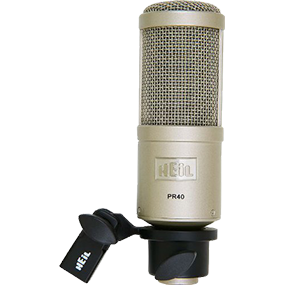 When you’re hosting, your own show, you need a quality microphone, and Heil is the answer. This is the microphone I use for every podcast, and it sounds as good as the day I purchased it. It produces the widest frequency range available in a dynamic microphone, and it outperforms most condenser microphones. You will need a XLR jack for this one…it’s NOT USB compatible, and you will need to purchase headphones separately.
When you’re hosting, your own show, you need a quality microphone, and Heil is the answer. This is the microphone I use for every podcast, and it sounds as good as the day I purchased it. It produces the widest frequency range available in a dynamic microphone, and it outperforms most condenser microphones. You will need a XLR jack for this one…it’s NOT USB compatible, and you will need to purchase headphones separately.
- Frequency response: 28Hz to 18kHz
- Impedance: 600 ohms balanced
- Output level: -53.9dB @ 1,000 Hz
- Body: Steel body with zinc die-cast bottom ring
- Generating element: Copper-wound dynamic with neodymium magnet structure
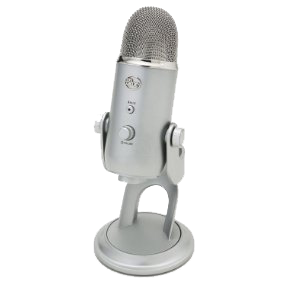 This is an excellent intermediate USB microphone that’s a step up from your entry level needs. You will need to purchase headphones separately.
This is an excellent intermediate USB microphone that’s a step up from your entry level needs. You will need to purchase headphones separately.
- Tri-capsule array – 3 condenser capsules can record almost any situation
- Multiple pattern selection – cardioid, bidirectional, omnidirectional & stereo
- Gain control, mute button, zero-latency headphone output
- Plug ‘n play – Mac and PC compatible
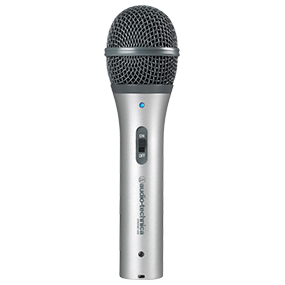 This is the perfect beginner microphone, or if you’re on a budget, or just need a spare microphone for an extra guest. mic to start with if you’re on a budget. You can connect it directly to your computer via a USB port and/or to professional audio equipment via a XLR jack. You will need to purchase headphones separately.
This is the perfect beginner microphone, or if you’re on a budget, or just need a spare microphone for an extra guest. mic to start with if you’re on a budget. You can connect it directly to your computer via a USB port and/or to professional audio equipment via a XLR jack. You will need to purchase headphones separately.
- Handheld dynamic microphone with USB digital output and XLR analog output
- USB output connects to your computer for digital recording, while the XLR output connects with your sound system conventional microphone input for use in live performance
- Smooth, extended frequency response ideally suited for podcasting, home studio recording, field recording, voiceover, and on-stage use
- Built-in headphone jack allows you to directly monitor your microphone output without audible delay
- Cardioid polar pattern reduces pickup of unwanted sounds from the sides and rear
Buy the Audio-Technica ATR2100-USB Cardioid Dynamic USB/XLR Microphone
Headphones
When picking headphones, we look for three basic things:
- Lifelike sound: When you record and edit a podcast, it’s best to hear it as close as possible to the real world. So, headphones that can reproduce voices as lifelike as possible, and don’t distort tones and sounds are what you want.
- All-around comfort: I’ve had headphones that hurt my ears after 30 minutes, and most recordings go longer than an hour…add the time to edit a podcast, and you better have the most comfortable headphones you can afford.
- A good length chord: Chord quality is a big plus around here. If you get something too short, you become limited with the space you have. Longer chords are much better than a short one…and there’s a good chance they won’t get tangled up like those Apple EarPods.
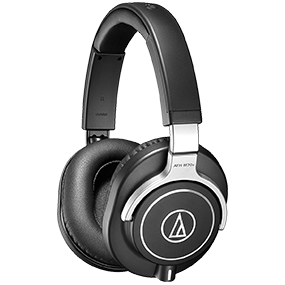 Audio-Technica makes some of the best sounding headphones around. I can wear them for long podcasts, and I’m pain free. They don’t press into my ears, but fit over them. You get three chord choices, so if you need shorter, go shorter.
Audio-Technica makes some of the best sounding headphones around. I can wear them for long podcasts, and I’m pain free. They don’t press into my ears, but fit over them. You get three chord choices, so if you need shorter, go shorter.
- M-Series flagship model, tuned for extremely accurate reproduction and carefully crafted using key metal components for lasting durability
- Proprietary 45 mm large-aperture drivers with rare earth magnets and copper-clad aluminum wire voice coils
- Extended response accurately reproduces extreme low and high frequencies while maintaining perfect balance
- Circumaural design contours around the ears for excellent sound isolation in loud environments
- 90 degree swiveling earcups for easy, one-ear monitoring
Buy the Audio-Technica ATH-M70x Professional Monitor Headphones
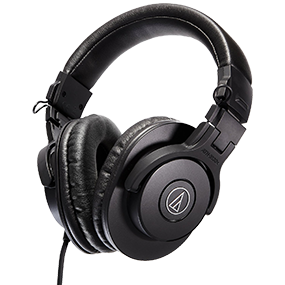 Audio-Technica makes some of the best sounding headphones around. The M30x is a more affordable version of the M70x, and a great value!
Audio-Technica makes some of the best sounding headphones around. The M30x is a more affordable version of the M70x, and a great value!
- Advanced build quality and engineering
- 40 mm drivers with rare earth magnets and copper-clad aluminum wire voice coils
- Tuned for enhanced detail, with excellent mid-range definition
- Collapsible for space-saving portability
- Designed to excel for studio tracking, mixing, and field recording
Buy the Audio-Technica ATH-M30x Professional Studio Monitor Headphones
Mixers
You don’t need a mixer to record a podcast. I didn’t use one for a good two years of my recordings. I did it all with a USB microphone, Audacity, and Skype, but once I got a mixer, my podcasting life got infinitely easier, and it took my podcast quality to the next level. Also, if you want to use the higher-end XLR microphones, a mixer is a must.
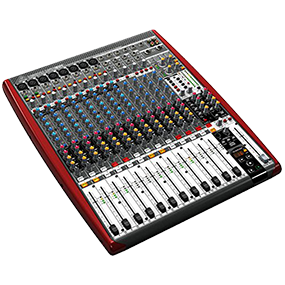 For a podcast, this puppy might be a bit much, but it has everything I can ever ask for with recording my podcasts. It’s a premium 16-Input 4-Bus Mixer with 16×4 USB/FireWire Interface, 16-Track USB Recorder, XENYX Mic Preamps & Compressors, British EQs and Dual Multi-FX Processors, and it works like a dream.
For a podcast, this puppy might be a bit much, but it has everything I can ever ask for with recording my podcasts. It’s a premium 16-Input 4-Bus Mixer with 16×4 USB/FireWire Interface, 16-Track USB Recorder, XENYX Mic Preamps & Compressors, British EQs and Dual Multi-FX Processors, and it works like a dream.
- Premium ultra low-noise, high headroom analog mixer with integrated 24-Bit/96 kHz USB/FireWire interface and 16-track USB recorder
- Built-in 16×4 interface connects directly to your computer and supports Mac OS X and Windows XP or higher
- Integrated 16-track USB recorder allows for instant recordings of your studio or live sessions
- 8 state-of-the-art XENYX Mic Preamps comparable to stand-alone boutique preamps with individual Phantom Power switches
- 8 studio-grade Compressors with super-easy “one-knob” functionality and control LED for professional vocal and instrumental sound
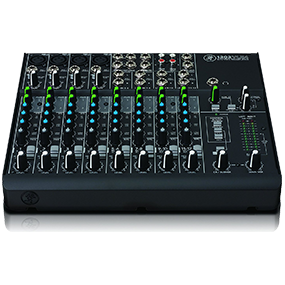 Want something a little simpler, and more affordable, the Mackie 1202VLZ4 12-Channel Compact Mixer works really well. This is the first mixer I ever used, and has held up well over time. It’s built like a brick, and is an excellent value for what you get.
Want something a little simpler, and more affordable, the Mackie 1202VLZ4 12-Channel Compact Mixer works really well. This is the first mixer I ever used, and has held up well over time. It’s built like a brick, and is an excellent value for what you get.
- 12-channel mixer featuring Mackie signature high-headroom/low-noise design
- 4 boutique-quality Onyx mic preamps
- Improved RF rejection perfect for broadcast applications
- Phantom power for condenser mics
- 12 high-headroom line inputs
Digital Recorders
Digital recorders are great for on the go, and you don’t have to worry about your computer crashing during the middle of a podcast.
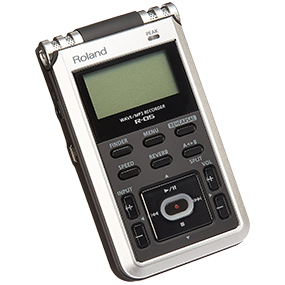 A friend, who is a musician, recommended the Roland R-05 Studio WAVE/MP3 Recorder to me because it’s easy to use, compact, and makes a high-quality recording. I love it, and now use it for every podcast I record.
A friend, who is a musician, recommended the Roland R-05 Studio WAVE/MP3 Recorder to me because it’s easy to use, compact, and makes a high-quality recording. I love it, and now use it for every podcast I record.
- High-quality stereo recording (24-bit / 96kHz) with the built-in stereo mic or external input.
- Strong, attractive metallic exterior. Music-practice features (change tempo without changing pitch, loop playback, etc.). Onboard editing functions; built-in reverb
- Auto record start, auto song split, auto level adjustPre Record function (captures 2 seconds of audio that precedes pressing REC). Use as a high-quality portable audio player (plays WAV and MP3 files) Includes windscreen and built-in tripod mounting socket
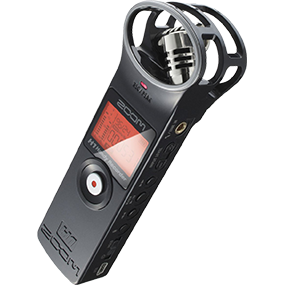 Something a little more affordable is the Zoom H1 Handy Portable Digital Recorder. It’s still small enough to fit in a pocket, and delivers a quality recording.
Something a little more affordable is the Zoom H1 Handy Portable Digital Recorder. It’s still small enough to fit in a pocket, and delivers a quality recording.
- Stereo X/Y mic configuration captures perfect stereo images
- Same frequency and SPL handling as popular Zoom H2
- Records Broadcast WAV (BWF) at 96kHz/48kHz/44.1kHz at 16-bit or 24-bit
- Records MP3 from 48 to 320kbps for maximum recording time
- Hi-Speed USB 2.0 port
Audio Accessories we use with our products above
If you go the mixer route, you will need some accessories too.
- AC/DC Adapter/Adaptor for Edirol R-09 R-09HR Roland R-05 WAVE/MP3 Recorder DC Charger Replacement Switching Power Supply Cord Cable PS Wall Home Charger
- Planet Waves Custom Series XLR Microphone Cable, 10 feet
- Griffin Technology iMic – The original USB Stereo Input and Output Audio Adapter
- Hosa HMR-003Y Pro Y Cable 3.5mm TRS to RCA 3-Feet
- Hosa Technology 2x Stereo Mini Male to 1/4″ Mono Male Cable, 5′
- Hosa CMP153 Y Cable 1/8 Inch TRS to Dual 1/4 Inch TS Cable – 3 Foot
- Stereo Audio Y Cable Splitter 1 Mini Plug
Audio Software
There are many different audio software solutions for you to choose from, but the three that fit the MHM Podcast Network’s needs best are Adobe Audition CC, Audacity, and Sykpe. We use Audition and Audacity to edit our podcasts, but some on our team even use the two programs to record the podcast (others record with a digital recorder and only use these programs to edit).
Adobe Audition CC
Adobe Audition CC is a professional audio workstation for Mac and PC that allows you to mix, edit and create audio content using multitracks. This helps in adding content from multiple sources. Adobe Audition CC is available as part of Adobe’s Creative Cloud collection for $49.99 per month or as a single program for $19.99 per month.
Audacity
Audacity is free alternative to Audition CC. It’s an open source software that’s easy-to-use, and allows for multi-track audio editing and recording for Windows, Mac OS X, GNU/Linux and other platforms.
Skype
Microsoft’s Skype is a free and easy alternative to phones/cellphones for contributors to your podcast who can’t be there in person. You also don’t need to spend money on a mixer to add Skype callers, which can be helpful if you’re just starting out and/or on a budget. While the call quality depends on your internet connection, most of the time the quality is good enough for your shows.
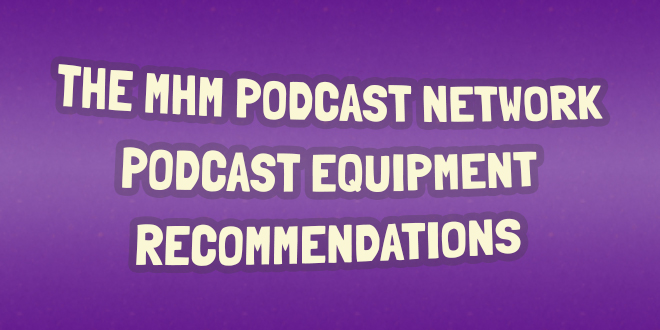
I highly recommend the Blue Microphones Yeti USB Microphone. It’s reasonably priced, easy to use, and, most importantly, sounds great. Most of us have makeshift recording “studios” and the Yeti works perfectly for those of us with limited space. ~ CMM
I used the Yeti for about two years, and never had any problems with the recordings.